By Sam Herzberg, AICP, May 21, 2025
A Mixed-Use, New Urbanist, and Ecologically-Oriented Community of the Village of Loreto Bay
This is Part 1 of a three-part article that will be published in the Northern News.
For over two decades, the APA California Northern Section’s International Program has organized international planning tours to various locations around the globe to enrich the worldwide planning knowledge of Northern Section members. Additionally, this program has also coordinated international collaboration projects with several partners in South America. Prior international planning tours included Cuba, China, India, Brazil, Eastern Europe, and Southeast Asia. Hing Wong, FAICP, and Alex Hinds have been serving as the Co-International Directors for the past dozen years with Hing taking the lead on tours and Alex taking the lead on collaborations. Juan Borrelli, AICP, has been a major contributor to these tours.
A seventh international planning tour was scheduled for the Middle East (Israel, Jordan, and Egypt) in late 2020. However, after many years of waiting, the pandemic and the conflict caused us to pivot to a new location. Since Alex & Eloisa Mendoza-Hinds have a “casita” (small, seasonal home) in the Village of Loreto Bay, we decided that Baja California Sur, Mexico, would be an ideal place for our next international planning tour (April 12-19, 2025) due to connections with planners and environmentalists in that region. This is Part 1 of a three-part series with our first stop at the Village of Loreto Bay.
THE VILLAGE OF LORETO BAY
The Village of Loreto Bay is a 6,000-acre, mixed-use new urbanist community development and ecologically oriented-residential community located within the municipality of Loreto in Baja California Sur. The site selected for development lays on a piece of beachfront land between the Gulf of California aka Sea of Cortez and the foothills of the Sierra de la Gigante mountains.
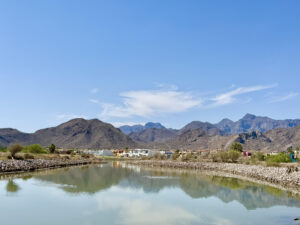
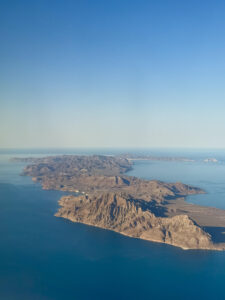
I had been to parts of northern Baja such as Tijuana, Rosarita, and Ensenada as well as had gone on a 50-mile kayak trip with my brother-in-law 25 years earlier around the islands in the Bahía de los Ángeles on the north-eastern side of Baja California. I had very good memories of early morning kayaking to avoid the afternoon wind and waves, reading John Steinbeck’s Sea of Cortez, viewing incredible diversity of wildlife, and bringing our food, water, and camping equipment with us. My brother-in-law spearfished dinner each night which we cooked in tequila, lime, jalapenos, and garlic. However, I had never discovered southern Baja (Baja California Sur), and this APA trip was the chance. When I looked into the geography of Baja and Alta California, where we live, I understood our mutual connection to the San Andreas fault. Baja California was at one point part of mainland Mexico but as a result of plate tectonics it was separated by the newly created Sea of Cortez. There was more of Baja California Sur to explore, and I am totally excited to recap our adventure.
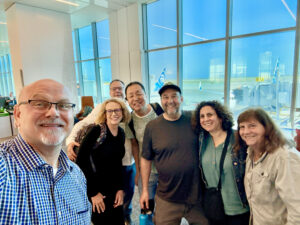
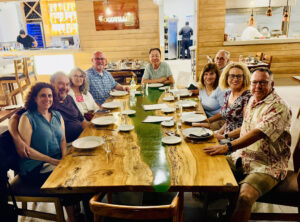
On April 12, 2025, we all met at the San Francisco International Airport (SFO) and flew together to Loreto International Airport (LTO) except for Alex and Eloisa who were already in Loreto Bay. During the first evening, we enjoyed a welcome dinner at our hotel. This traveling group comprised of Alex and Eloisa; two former Northern Section Directors (Hing and Juan); current Northern Section Director Elizabeth Tyler; former City of Concord Community Reuse Area Planner Joan Ryan, AICP, who had redeveloped the local military base for housing and her husband Kerry Salisbury; and my wife Leslie Herzberg and I, Senior Planner with the San Mateo County Parks Department. Our group quickly bonded over our shared adventure together and we discussed what was anticipated and what we all hoped to learn from the trip. Hing coordinated with Alex and Eloisa and others on this trip to provide gifts for all speakers in appreciation for sharing their time and expertise with us.
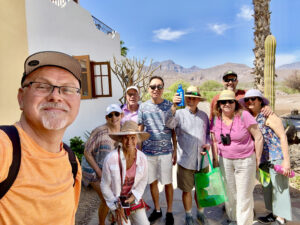
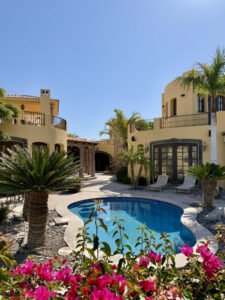
The next morning, Alex and Eloisa led a walking tour of the Village of Loreto Bay community so we could orient ourselves at this first stop. The adobe architectural-style homes were beautiful with different desert colors and desert landscaping. The development faced the shores of Loreto National Marine Park and was largely made up of expatriate Americans and Canadians, along with some Mexican nationals. During the afternoon, we swam in the community pools, and Alex and Eloisa graciously hosted us for dessert that evening at their residence so we could enjoy Loreto Bay hospitality. Each house is built following design review guidelines and when sold from previous owners turn-key conditions apply. Each home is typically two stories with the third being a rooftop palapa or tower which adds to the enjoyment of outdoor living by providing views of the surrounding area as well as stargazing at night.

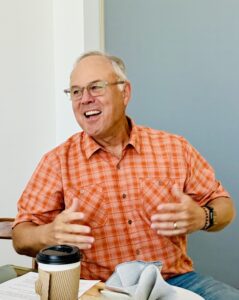
While at this unique location, we met with the Loreto Bay HOA Sustainability Committee Chair Catherine Tyrrell and John Banas, Keep Loreto Magical Advisory Board member, who gave us the history of the Village of Loreto Bay. They explained that in 1974, the Federal government wanted to nurture tourism by creating an Integrated Plan for tourism focused on improving infrastructure in five specific locations in Mexico: Cabo San Lucas/San José del Cabo, La Paz, Loreto, Ixtapa, and Cancun. These cities are considered the 5 petals of the sunflower, and sculptures have been created to promote this concept. Every year, five percent of the lands were envisioned for acquisition for conservation, and 25,000 acres have been preserved, although all agreed more needs to be done. Loreto has not received the infrastructure that Cabo San Lucas/San José del Cabo or La Paz has. In 2000, Loreto was a small fishing village of 10,000 people. Japan came in with large boats and started overfishing off the coast of Loreto. The Ocean Foundation subsequently created a proposed Loreto Bay National Park pride campaign featuring the Chocolate Clam as its mascot, and due to popular support Loreto National Park was created including 510,472 acres and primarily consists of the Gulf of California and its surrounding islands. About 88% of the National Park is ocean surface, with the remaining 12% being 5 islands, islets, and coastal regions.
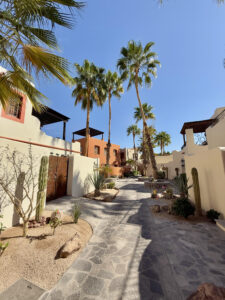
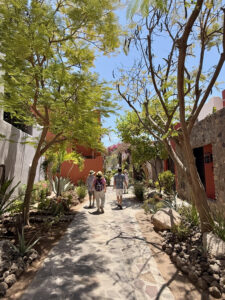
The original Master Plan for Loreto Bay was the work of Miami-based (Andres) Duany Plater-Zyberk and Company, leaders in the New Urbanism movement. Beginning with the founder’s neighborhood they set out to create a thriving eco-friendly resort. Using 8 key Master Planning design principles and environmental stewardship values this dynamic team and a number of HOA volunteers set out to create a thriving, eco-friendly resort community by:
- Eliminating and reducing car usage,
- Building walls that breathe,
- Seeking simplicity,
- Thinking globally/acting locally,
- Drawing power from the sun and wind,
- Blurring living boundaries,
- Preserving the greenery and restoring the wetlands, and
- Recycling water, glass, aluminum and composting organic garbage and green landscape waste.
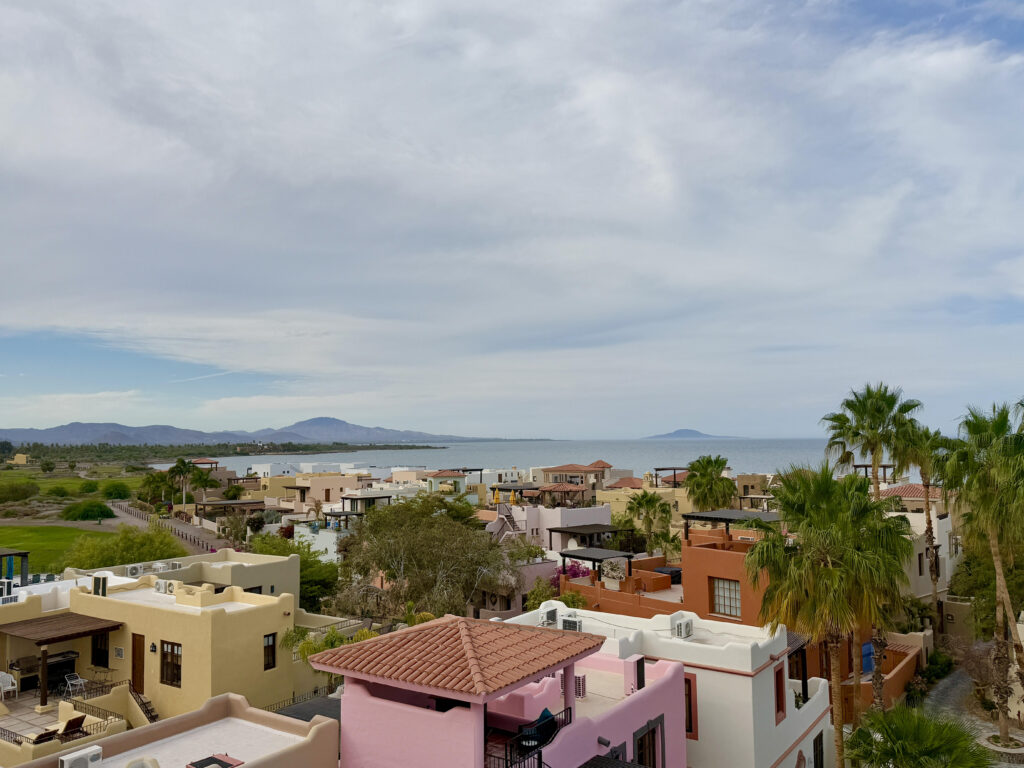
To date, many of the HOA goals have not been completed but are providing incremental improvements such as a food waste and a composting facility that was just completed. This is one aspect of the aspirational vision for the community. The first developer went bankrupt. The second developers were two Canadians with sustainability expertise, and they pursued the vision of an 8,000-acre community with 6,000 homes developed in nine phases for a population of 100,000 people. So far only two phases of the development have been completed for 2,000 people, which is 7% of the adjacent community of Loreto (28,000 people).
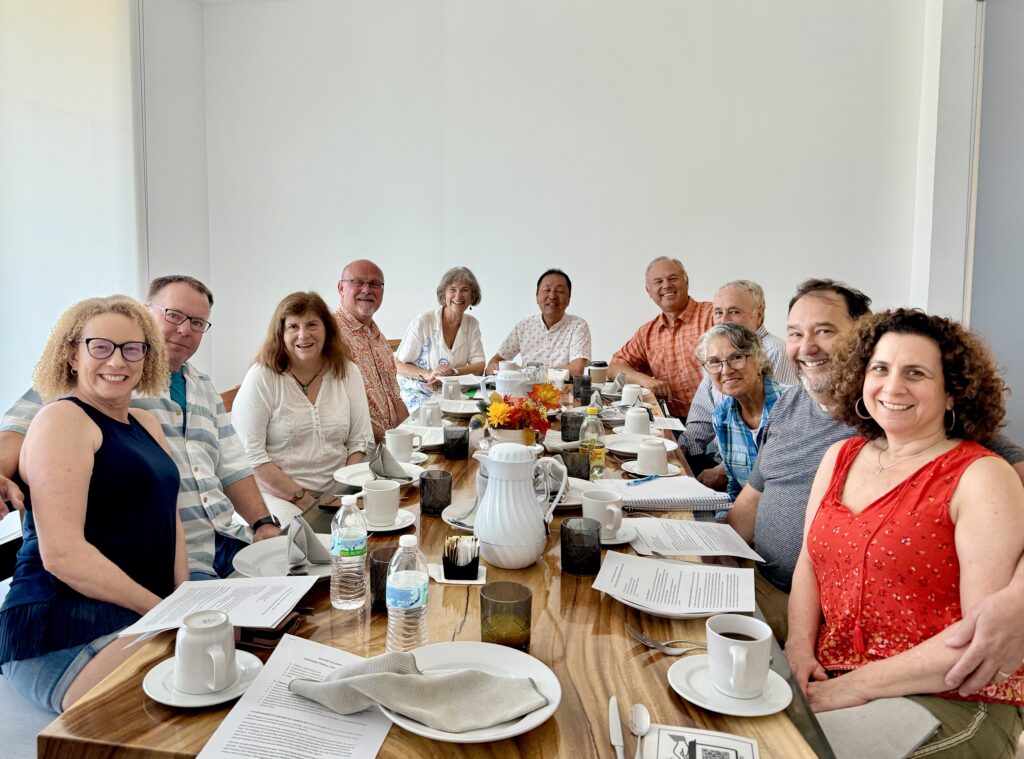
We learned that one of the challenges was the type of bricks initially used to build homes were adobe bricks that were prepared on site to help buildings stay cool in summer and warm in winter. However, producing enough of these bricks proved to be challenging, and maintaining consistency of the compounds (sand, clay, water, fiber/minerals) was also difficult. Moreover, workers had to contend with the weight of the bricks and the lack of flexibility for doing things such as conduit inserts and piping runs. In 2007, they decided to use the Perform Wall. These are light, can be easily cut to size, and running conduit and piping is much easier. Because you don’t need nearly the same amount of mortar as adobe, the cost was reduced, and construction was faster. The community tried to create different levels of density with the highest density in the center of the development and made sure the entire development was walkable.
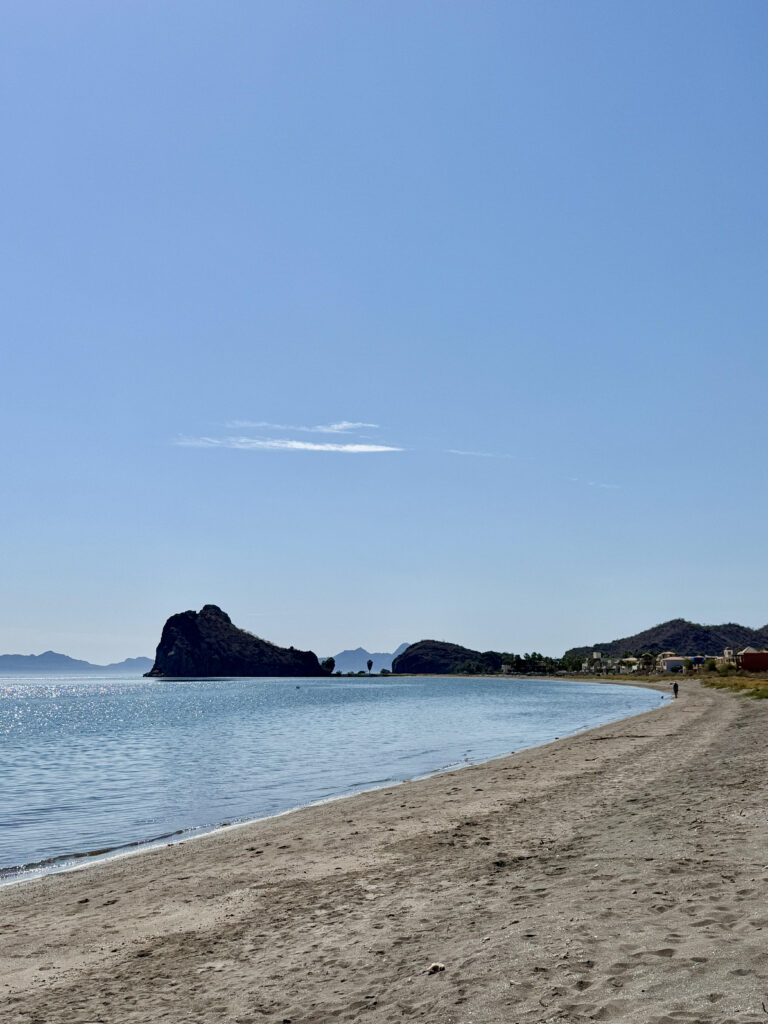
The development has attracted persons interested in a more sustainable, ecologically oriented lifestyle. Because of the past bankruptcy, the local community created a loan program to facilitate pending developments to create the current community. The larger development area has not been developed as originally anticipated. There are three large developments the community is currently working on involving: 1) the “Ovalo”’ (a large centrally located parcel initially proposed as a botanical garden; 2) vacant waterfront lots with a community space paseo between existing four-story buildings that would provide visual and physical access to the Gulf of California; and 3) a mixed-use development involving a large commercial development area with housing. Eleven US and Mexican firms competed to plan these areas and a former intern for Andres Duany got the job, and the resulting 5-day long charette planning process has been the most important discussion of the plans to improve the community. There are many public/private partnership opportunities for Loreto Bay capital improvement projects in the future. The Village of Loreto Bay seeks to be welcoming, peaceful, safe and a friendly community that enhances the sustainability and tranquility of this unique environment, and it embraces the active outdoor lifestyle while respecting the values of Mexican culture.
